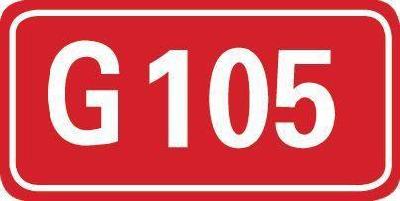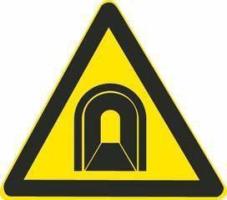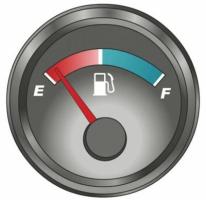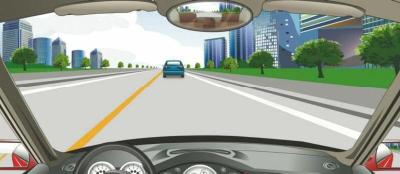1、Whats the meaning of this sign?

A、township road No.
B、county road No.
C、provincial highway No.
D、national highway No.
Answer:D
2、Whats the meaning of this sign?

A、water channel
B、bridge
C、tunnel
D、Culvert
Answer:C
3、Whats the meaning of this sign?

A、crosswalk lights
B、watch for pedestrians
C、attention to traffic lights
D、intersection
Answer:C
4、When a vehicle passes a tunnel, it is prohibited from overtaking.
A、Right
B、Wrong
Answer:A
5、As the road is wet and slippery after rain, brake application when driving can easily ___.
A、Cause sideways slide and traffic accident
B、Cause collision due to poor visibility
C、Be ignored by the drivers of other vehicles
D、Cause engine kill
Answer:A
6、What is this instrument?

A、pressure meter
B、ammeter
C、water temperature meter
D、fuel meter
Answer:D
7、When driving a motorized vehicle uphill, you should speed up and honk when you going to reach the top of the slope.
A、Right
B、Wrong
Answer:B
8、Let the straight-going vehicle go first at this intersection.

A、Right
B、Wrong
Answer:A
9、What is the max speed on this city road?

A、30km/hr
B、40km/hr
C、50km/hr
D、70km/hr
Answer:C
10、Top speed in this section is 50 kilometers per hour.

A、Right
B、Wrong
Answer:B
11、You can overtake from right side in this case.

A、Right
B、Wrong
Answer:B
12、When a motorized vehicle goes at night through an intersection that has no traffic lights, the driver should not use the high and low beam lights alternately.
A、Right
B、Wrong
Answer:B
13、What kind of violation does this vehicle on road have?

A、not hang the license plate as required
B、deliberately cover the license plate
C、occupy the lane for non-motorized vehicles
D、run in the opposite direction
Answer:B
14、What does this sign mean?

A、Reminding continuous two or more up slopes ahead
B、Reminding the steep uphill road ahead
C、Reminding the steep downhill road ahead
D、Reminding continuous two or more down slopes ahead
Answer:D
15、It lights to indicate that ______

A、the side fans work
B、air external circulation
C、the front fan works
D、air internal circulation
Answer:C
16、The vehicle with ABS system can minimize the braking distance when driving on a road covered by ice and snow.
A、Right
B、Wrong
Answer:B
17、When a vehicle passes a bumped road, the driver should ________.
A、Speed up and dash over under inertia
B、Change to the neutral gear and slide over
C、Maintain the original speed and pass
D、Pass slowly and steadily
Answer:D
18、How long is the period of probation of a motor vehicle driver who has applied for a driver license for the first time?
A、18 months
B、16 months
C、12 months
D、6 months
Answer:C
19、It lights to indicate that ______

A、the tail fog light is turned on
B、the low beam light is turned on
C、the high beam light is turned on
D、the head fog light is turned on
Answer:D
20、When a traffic accident causing human injuries, preserve the scene and immediately report to the police.
A、Right
B、Wrong
Answer:A